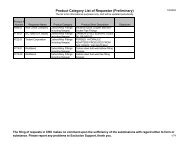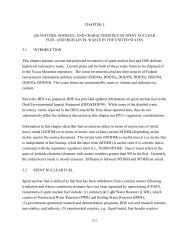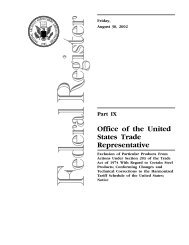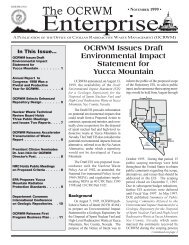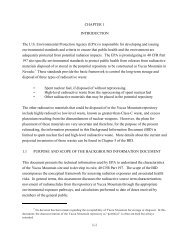E-Commerce Commission Press Kit
E-Commerce Commission Press Kit
E-Commerce Commission Press Kit
You also want an ePaper? Increase the reach of your titles
YUMPU automatically turns print PDFs into web optimized ePapers that Google loves.
WORKFORCE FLEXIBILITYWorkforce flexibility refers to a company’s ability to produce products and services with less rigidorganizational structures. It also refers to a worker’s ability to work without being tied to a deskor an office. The growth in information technology has played an important role in both drivingthe need for a new work force and in enabling greater flexibility in the work place.In the old model of industrial organization, production workers performed tasks by rote, over andover again throughout a shift. A car frame rolled down an assembly line, a worker attached apart, it proceeded to the next worker who performed the next process, and on it continued until acompleted car emerged at the other end. A bank teller opened accounts, accepted deposits andprovided account balance information. Someone else handled transactions involving Certificatesof Deposit, Money Market Accounts and safety deposit boxes.Bureaucratic work organizations are giving way to flexible “cells” and teams that cross the oncerigidlines of job description, management reporting structures, and business units. Thistransformation often results from a corporate objective to implement total quality management(TQM) and Six Sigma (a benchmark of nearly zero defects) systems throughout theirorganizations. Reducing errors and return rates, lowering cycle times and reducing costs meansgetting it done right the first time. People on the “front lines” - - the factory floor, the salesdepartment, the customer service organization - - need to have the education and information tomake decisions and solve problems. Companies with successful TQM and Six Sigma initiativesinvest heavily in training and education. They also give employees the tools they need: clearlystatedobjectives and real-time feedback on how well those objectives are being met. A robustcomputer network with online training and support tools can reinforce (or substitute for) inclassroomtraining sessions. It also keeps workers up-to-date with the latest forecasts, the currentday’s production or sales requirements, materials shortages, and other information in order tobetter perform the day’s tasks and anticipate future needs.As more companies move to this method of work organization, the need to share information andknowledge across the enterprise will increase. Internal corporate networks and the Internet willplay an important role in enabling this transition.Thanks to personal computers, fax machines, modems and cellular phones, as many as sevenmillion workers in the United States work at home in “virtual offices.” 97 The Department ofTransportation estimates that up to 15 million workers may be telecommuting in the next decade.Organizations with telecommuting programs report an increase in productivity, faster completionof assignments, fewer sick or absent days, better time management and increased morale andcommitment to the company. They also benefit from reduced office space needs and associatedcosts, an enhanced ability to attract and retain quality employees, and improved customerservice. 9848






